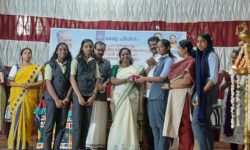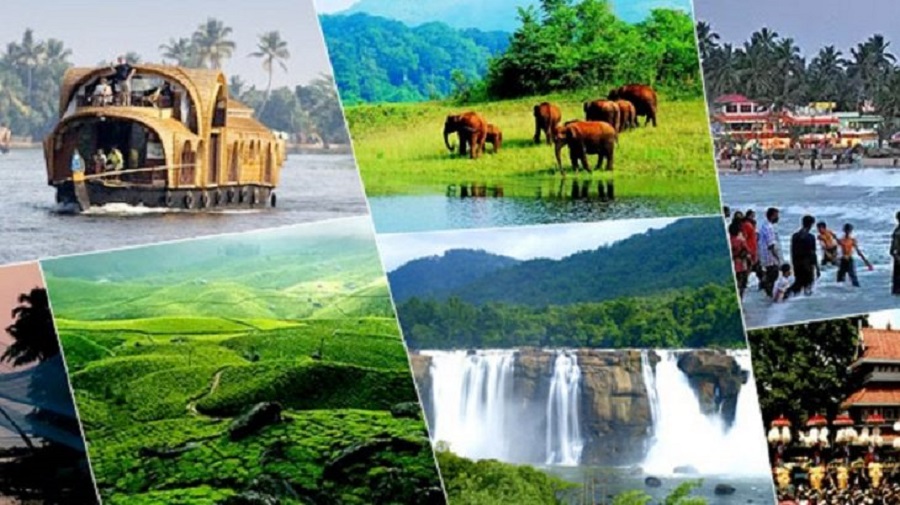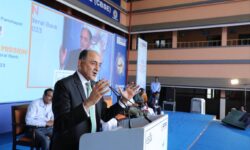KOCHI:
Whenever Kibuuka Mukisa Oscar travels to a new city, the young Ugandan photographer puts out a social-media call asking for local breakdancers. It was the same when he visited Kochi ahead of India’s only biennale.
“Any bboys in Kochi area?” asked his Instagram page. Prompt came the response — from a member of Kerala’s Southside Bboys who had been following the Ugandan artist.
It’s an incident the 26-year-old from his country’s capital of Kampala narrates happily in the context of his work being showcased at the fourth edition of Kochi-Muziris Biennale that is on till March 29. ‘Breaking Uganda; Capturing Uganda’s Breakdance Revolution’ represents the evolution of breakdance in his native land in the fertile Nile basin.
So, what is bboys? Rather, who are they? Well, they are breakdancers. Known for their athleticism, they perform to vibrant beat of drums, primarily on the streets. As for Southside Bboys, also called SSB, it is a group formed in 2014 in Kochi. The group comprises 11 members specialising in street dances such as b-boying, hip-hop, popping and house.
Kibuuka states his main aim is to record and promote the growing hip-hop cultures across the world. His series of work at Kashi Art Gallery in Fort Kochi traces the history of his homeland though dance. “I want to raise awareness on the impact that breakdance can have on people’s lives,” says the artist, also a social worker. “By translating the work of the practitioners in workshops, schools, slums, rural areas and cities into images, I use my voice to visually celebrate the positive living associated with this dance.”
Breakdancing has been widely popular in Africa’s hip-hop cultures, and Uganda is no exception. From early this decade, Kibuuka has been documenting the relentless energy of b-boys. “Anywhere I go, I try to link up with skaters and b-boys of that place,” says the self-taught photographer. “Meeting local talents makes me feel at home and welcomed.”
That is how Kibuuka has had an Indian association that goes much before the ongoing 2018 Biennale. As part of his “life-long” artistic project, the artist jammed with a b-boying group in Kochi. It resulted in an amazing set of photographs featuring SSB and their street-style dance. “I wish to give a smile to the world through my lens, says the artist, adding that the Biennale project seeks to evoke a positive dialogue about the African continent.
Meeting SSB was “very organic”, says Kibuuka. “We were speaking the same language: Of dance. These guys had great energy and style for dance. It’s great experience to associate with them.”
Arnold Amon of SSB says all members of the group have for a decade been active in ‘underground hip hop’, where independent dancers come together to perform to anti-commercial lyrics that promote social consciousness. “There were several such crews in Kerala around 2008. Many of them are now obsolete,” he adds.
SSB, on the other hand, thrives. The group is only flourishing. For instance, Arun C.S aka Bboy Zee and Mahesh B aka Bboy Mazaru have won a few titles for Kerala, participating in national-level dance events.
When SSB was formed, it was the coming together of quite a few former students and teachers. Zee, for instance, taught most of the Bboys in his vicinity and has been doing so since 2008. “We train ourselves in our styles after taking lessons from some of the world’s hip-hop pioneers. Ones who have invented dance styles since the 1970s, innovated them and passed down the art through generations,” says Arnold. “We have been following Kibuuka’s work for some time now. Jamming with him was a great experience. An amazing learning experience.”
At the 108-day biennale here, Kibuuka also displays his photographs on skateboarding culture. That series, titled ‘Ethiopia Skate’, notes how the financially poor youth that frequent skateparks are forced to work for low incomes. “The skatepark thus becomes an arena of self-exploration, expression and empowerment,” he adds.




